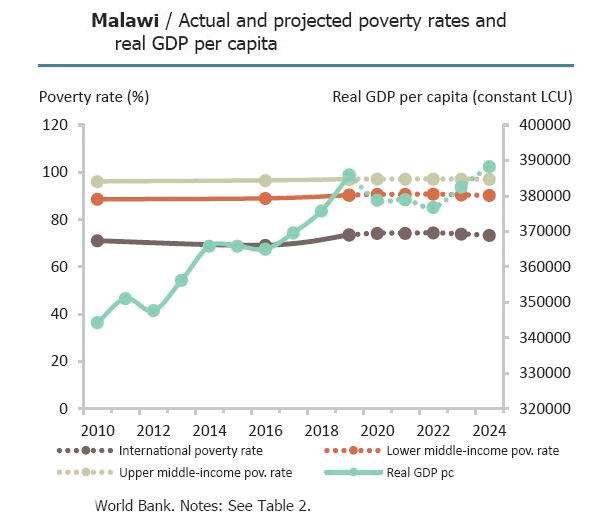Number of poor people set to rise
The World Bank has revised upwards the international poverty line (IPL) to $2.15 (about K1 772) per day, a situation economists say will increase the number of people in extreme poverty.
The Bretton Woods institution’s fact sheet published last week says this reflects the evolving difference in price levels and means that anyone living on less than $2.15 a day will be considered living in extreme poverty.

Before revising the poverty line, the minimum level of incomes deemed adequate in a particular country was at $1.90 (about K1 566) per day since 2015.
Reads the fact sheet in part: “The rise in international poverty line reflects an increase in the costs of basic food, clothing and shelter needs in low-income countries between 2011 and 2017 relative to the rest of the world. In other words, the real value of $2.15 in 2017 prices is the same as $1.90 was in 2011 prices.”
The World Bank said while the nominal value of IPL has increased from $1.90 to $2.15, the real value of the international poverty line remains virtually unchanged as the basket of goods and services that would cost $1.90 in 2011 in a typical low-income country would cost $2.15 on average.
In Malawi, the share of Malawians living below the IPL of $1.90 per day hovers around 74 percent, with an estimated 26 percent of the 18 million Malawians able to earn and spend at least $1.90 per day, according to World Bank figures.
Reacting to the change in the IPL, National Planning Commission director for development planning Grace Kumchulesi said this means the number of people living under the poverty line will go up and those who were poor under the $1.90 poverty line will be poorer under the $2.15 poverty line.
She said: “We need to promote economic activities in the productive sectors to increase economic empowerment activities that will provide decent employment opportunities that can potentially improve the standards of living.
“We need to build resilient and sustainable social support systems to take care of vulnerable groups that need social support in a more sustainable manner and in ways that provide for graduation rather than eternal dependence.”
Kumchulesi said Malawi needs to aggressively implement Malawi 2063, the country’s long-term development plan.
She said the first 10-year implementation plan outlines some of the catalytic interventions to get Malawi into a middle-income status by 2030 and meet most of the United Nations Sustainable Development Goals.
But Economics Association of Malawi executive director Frank Chikuta argued in an interveiw on Monday that the revision reflects nominal changes in international poverty line due to inflation and not real changes to the basic needs basket, observing that it is hard to determine the impact of this revision on Malawi.
World Bank data shows that between 2010 and 2020, the share of people below the $1.90 per day poverty line increased from 72 percent to 74 percent.






One Comment